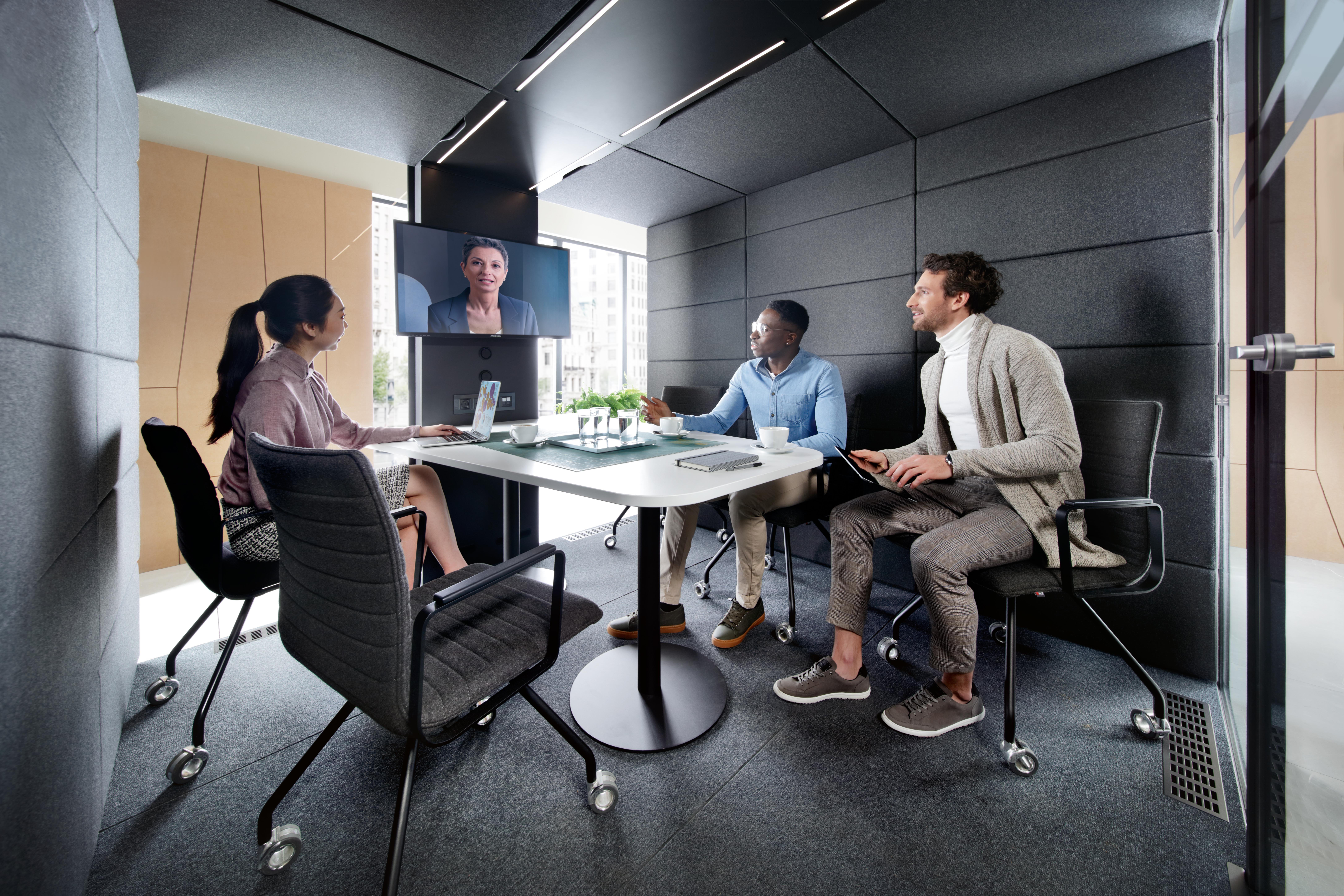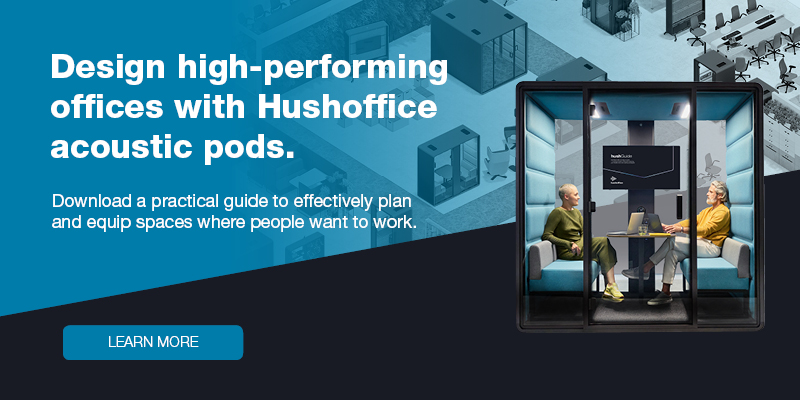Etiquette of the videoconference – Savoir-vivre in virtual communication with customers
- Posted on: 20 October 2020
- By: Hushoffice Team
In the new business reality, the rules of which are dictated by the coronavirus today, videoconferences for companies have become virtually a standard of communication. Apart from knowing and being able to operate different videoconference applications, one should also know how to avoid social blunders while communicating with customers, contractors or coworkers in this manner.
Google Hangouts, Microsoft Teams, Skype, Zoom – these are some of the most popular Internet videoconference tools today. In the context of the pandemic threat, they enable safe conducting of online meetings which can be attended by any number of people connecting from anywhere in the world. Regardless of whether a videoconference is attended by an intimate group of employees of our company who perform their tasks under the home office system and have to discuss things from time to time, or if the videoconference is a very official, high-level meeting, a specific etiquette is always binding.
Videoconference – good practices BEFORE
Appropriate preparation of (and for) a videoconference is half the battle.
If you are the organizer, it would be good form to send invitations for the videoconference to the participants several days before, or alternately, to jointly determine a date suitable for all. Here, one should not forget the differences between time zones in which the participants may function, and avoid any faux pas concerning the choice of date, which might result e.g. from disregarding public holidays in the home country of any participant of the virtual meeting. Apart from the date, the invitation should precisely specify the purpose and approximate duration of the meeting.
At this stage, you can also inform who is to participate in the videoconference and possibly present its agenda. Where necessary and substantiated, it is worth providing the invited people, even before the beginning of the online meeting, with materials they should acquaint themselves with so everything would proceed more smoothly.
To conduct a videoconference, applications which are easily available and intuitive should be chosen; they should not pose any problems to anyone, not require installation, and offer functions corresponding to the specific nature of a given meeting.
As an organizer and participant alike of a videoconference, you should check before the beginning whether your equipment and software work properly and the Internet connection has the appropriate quality, so you would not struggle with potential technical problems in the beginning of such a meeting, thus disrupting it from the start.
Where to conduct a videoconference
Videoconference means sound and image, so you should provide a relevant visual and acoustic background, having efficient control of what can be seen within the frame and what sounds are made in the environment. During an online meeting, the participants should stay in places where nothing disrupts the communication. Noises from the outside or from the next room are unacceptable, as are random people or inappropriate objects in view, so-called videobombers, ringing telephones or sounds of a chat active on a computer, or anything that may divert attention from the essence of the message. What matters is the sound and image quality, as it helps concentration and communication. Therefore, we should avoid blinding sun in the background or too deep darkness within the frame. If several people are using a single camera, they should be seated in such a manner that the lens would embrace all of them. It is hard to organize a videoconference professionally if there is no soundproof and well-arranged conference room at the office. In such situations, hushMeet.L will prove itself perfectly.
This is an office acoustic cabin for several people, designed for holding comfortable business meetings in a small group. It will also work perfectly as a comfortable place and a proper “scenery” for a videoconference. It ensures silence (outside sounds, coming from a bustling open-space office, are muffled to the level of a whisper) and confidentiality (conversations during a videoconference cannot be heard outside the cabin). It also allows you to arrange the frame easily (and according to the etiquette) and to make sure no unauthorized person enters it by accident. In hushMeet.L, you can install a large screen, a monitor or a TV, or arrange cameras or microphones optimally to obtain the best possible communication quality.
Videoconference SAVOIR-VIVRE
Beside preparations for a videoconference and selection of the best place, an important thing is the rules of behaviour, which are quite numerous. Let us recall several major examples.
You have to look fittingly for the nature of the meeting. Since we are speaking of business videoconferences, the participants’ clothing should be close to the business dress code – even if they are talking from their homes. A neat, plain, neutral appearance is essential – it poses no distraction to anyone and expresses respect for other participants of the videoconference. Moreover, it is worth ensuring the most favourable set possible and frame yourself so that your face and chest could be seen – without close-ups tiresome to other users or unnatural upward or downward takes – these do not facilitate communication and look unprofessional.
If you are an organizer or a moderator, the first thing during the videoconference is to introduce the participants (or give the floor to each in turn so they could introduce themselves) and to remind the agenda of the meeting.
It is worth remembering to keep the eye contact and to look straight into the camera when you are having the floor and speaking to other participants of the videoconference, as well as to mute your microphone when you are not talking, so you would not disturb the others.
If you wish to enter the discussion or ask any unplanned question and the moderator does not give you the floor, you can sometimes use a text chat, usually launched during videoconferences, for this purpose.
What NOT to do during a videoconference
- Do not come late and do not “leave” before the meeting ends.
- Do not interrupt when someone is speaking; do not extend your allotted speaking time.
- Do not occupy yourself with other matters when you are participating in a videoconference; this is rude.
- Do not overuse gesticulation, do not make nervous, sudden movements in front of the camera.
- Do not shout or whisper – speak clearly and naturally.
- Do not distract the participants with unusual clothing, a strange haircut or accessories.
- Do not answer the phone during a videoconference.
There can be many more prohibitions and different faux pas, but it is all but impossible to mention all things which might turn out improper in such a situation. The videoconference etiquette includes all things covered by etiquette of a regular business meeting, plus issues strictly connected with the form of contact – through the Internet, screen and microphone, rather than face-to-face.


